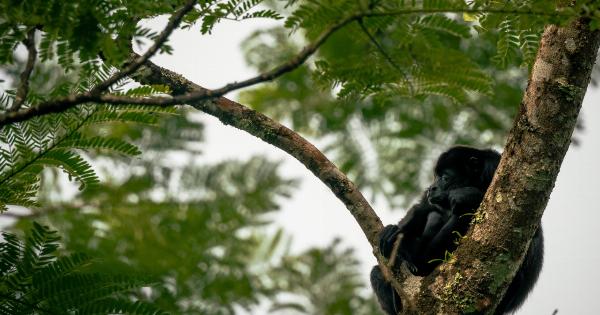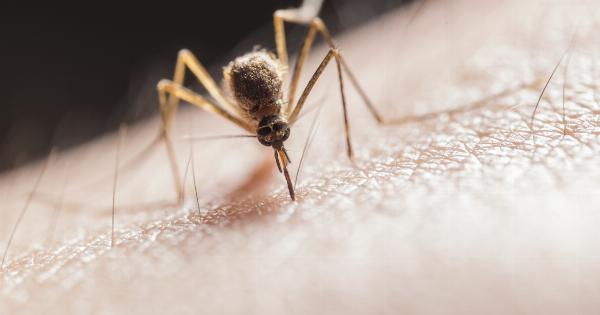Monkeys, with their high intelligence and dexterity, have been known to engage in a wide range of activities. However, in some cases, these clever creatures have been observed carrying hazardous materials.
This phenomenon raises concerns not only for the safety of the monkeys themselves but also for the potential risks posed to humans and the environment. In this article, we will delve into the various instances of monkeys carrying hazardous materials and explore the implications and potential solutions to this unusual behavior.
Instances of Monkeys Carrying Hazardous Materials
While it is not a widespread occurrence, there have been documented cases of monkeys coming into contact with hazardous materials and either intentionally or inadvertently carrying them. Here are some notable instances:.
1. Monkeys and Chemical Waste
In certain regions where industrial waste is improperly disposed of, monkeys living in close proximity to these areas may come into contact with dangerous chemicals.
These chemicals can cling to their fur or skin, making them unwitting carriers of hazardous materials. They can inadvertently spread the toxic substances to other areas or even contaminate their own habitats.
2. Monkeys and Radioactive Materials
Monkeys inhabiting regions near nuclear facilities or sites of nuclear accidents are at risk of encountering radioactive materials.
Their natural inquisitiveness may lead them to explore contaminated areas, resulting in the transfer of radioactive substances on their fur, bodies, or even internally. This poses a potential threat to humans who come into contact with these contaminated monkeys.
3. Monkeys and Biological Agents
There have been rare cases where monkeys have been found carrying or handling biological agents, such as viruses or bacteria.
These instances are particularly concerning as they may contribute to the spread of diseases that can affect both primates and humans. Monkeys could unknowingly serve as vectors for diseases that could reach epidemic proportions if left unchecked.
4. Monkeys and Hazardous Materials in Urban Areas
In urban environments, monkeys may come across hazardous materials such as chemicals, paints, or even discarded batteries.
These materials may not only pose a direct threat to the monkeys themselves but also create potential contamination risks if the materials leak or mix with other substances when being transported by the monkeys.
Implications and Risks
The presence of monkeys carrying hazardous materials poses several implications and risks that need to be addressed:.
1. Environmental Contamination
Monkeys, acting as carriers of hazardous materials, can contribute to the contamination of ecosystems. Chemicals, radioactive substances, or biological agents can have detrimental effects on flora, fauna, and the overall ecological balance.
The introduction of these materials into ecosystems can have long-lasting consequences for biodiversity and the health of the environment.
2. Human Health Risks
The transfer of hazardous materials through monkeys can potentially expose humans to various risks. Direct contact with contaminated monkeys, their excreta, or bodily fluids can lead to harmful health effects.
Indirect exposure may occur if the materials spread through environments where humans live or work, causing potential inhalation, ingestion, or dermal risks.
3. Disease Transmission
With regard to biological agents, the transmission of diseases through monkeys can be a significant concern. Monkeys acting as carriers for viruses or bacteria can introduce pathogens to new areas or populations.
This can result in the outbreak and spread of diseases that pose a threat not only to other primates, but also to humans who may come into contact with infected monkeys or their bodily secretions.
Prevention and Solutions
Addressing the issue of monkeys carrying hazardous materials requires both short-term and long-term strategies. Here are some potential prevention and solution options:.
1. Proper Waste Management
Implementing effective waste management practices, particularly in industrial areas and regions with nuclear facilities, is crucial in minimizing the risk of monkeys encountering hazardous materials.
Proper containment, disposal, and treatment of chemicals, radioactive substances, and biological agents can significantly reduce the chances of contamination.
2. Education and Awareness
Raising awareness among communities living near monkey habitats about the risks associated with hazardous materials is essential.
Educating individuals about the potential consequences, emphasizing the importance of responsible waste disposal, and promoting hygiene practices can help mitigate the presence of contaminated monkeys.
3. Habitat Preservation and Restoration
Protecting monkey habitats and minimizing human encroachment can help reduce the likelihood of monkeys coming into contact with hazardous materials.
Preserving natural habitats and restoring damaged environments can create a safer ecosystem for monkeys, minimizing their exposure to potential dangers.
4. Monitoring and Research
Continued monitoring and research on monkey populations, their behavior, and their interactions with hazardous materials are crucial.
Understanding the patterns and factors that drive monkeys to carry such materials can aid in developing targeted strategies to prevent these incidents and address concerns effectively.
Conclusion
While instances of monkeys carrying hazardous materials are not widespread, they present significant risks to both the environment and human health.
Taking steps to prevent these incidents and addressing the root causes can help mitigate the potential threats associated with this behavior. By implementing proper waste management practices, raising awareness, preserving habitats, and conducting ongoing research, we can strive to create a safer coexistence between humans and monkeys.































